Visit Library for MBP Pro eBooks |
OK, so by the end of the previous episode I’d selected three sets of ten images from just over half of a total 320 images I selected from this year’s amazing Complete Namibia Tour. Today, with slightly under half of my selection left, I was going to try to select just ten more, but after a very picky look through my remaining images, I have 25 that I’d still like to talk about, so I’m going to whittle that down to twenty and do one more episode after this to finalize the series. It was such a productive trip, so this is a nice position to be in, and I hope you continue to enjoy joining me on my travels via the Podcast.
We pick up the trail as we made our first visit to the Himba village, where I found that the girl I’ve been photographing over the years was not there. She’d be 18 years old now, and I was looking forward to meeting her again, and was ultimately hoping to get a photo of her with her first baby at some point, but at least for this visit, it wasn’t to be. We did talk with the people that were there and will try to get her back for our next visit, but only if it isn’t too much trouble. The Himba haven’t been getting so many visits due to the pandemic, so there were a number of things that happened during our two visits, one at the start of this day, and one towards the end.
The first thing that I noticed was that the Himba did not seem to get tired of our presence. Usually, after we’ve been there for a few hours, they set up a shop, with most of the women and children in the village forming a circle, and sell bracelets, bowls, baskets, dolls, and other ornaments. Buying these things is one of a number of ways that we pay them back, but it’s also, in the past, been a sign to us that they are ready for us to leave. On this visit, they didn’t set the store up until I felt that the group and I were running out of things to do, so I asked them if they were going to set up their shop, through our guide of course. My understanding of the Himba language stretches to around five or six words, so I rely on our guide heavily for communication.
The other thing that happened was that we met the elder of the group for the first time when we went back in the evening. We don’t usually see many men, but the elder was sitting on a chair near the entrance to the outer corral and was surrounded by many young to middle-aged men. They asked to see my photos from previous visits, so we spent ten minutes or so looking through my photos of them. It was lovely to see their reactions as members of their group that had moved away appeared on my iPhone screen. I was also interested to find that they knew many of the people from the group that lives near the foot of a mountain near Puros, a few hours by car to the northeast from their village.
We were also thanked by the elder for taking so many provisions for them, and he asked our guide to make a note of what he’d brought along for them, and to spread the word that this is the amount of stuff they’d like when people visit. I was amazed to hear that some people turn up, take photos, and leave without giving them any provisions. An exchange like this has to be mutually beneficial, or it becomes tiresome for the people in the village. And for those that turn up and think that paying $10 for a doll will make up for spending one or two hours there, it’s really not. Let’s help people out a little more than that.
Anyway, to the photos… One of my first shots was this image of four Himba children in the back of a truck. This was only the back of the truck, just sitting in the dust, but it was a nice toy for the kids. I found it ironic that the boy in the center of the frame had a key around his neck, as though he was going to be letting himself in when he got home from school. The irony comes from the fact that none of their huts have doors, let alone a lock with a keyhole, so this was purely an accessory, which I thought was a nice touch.
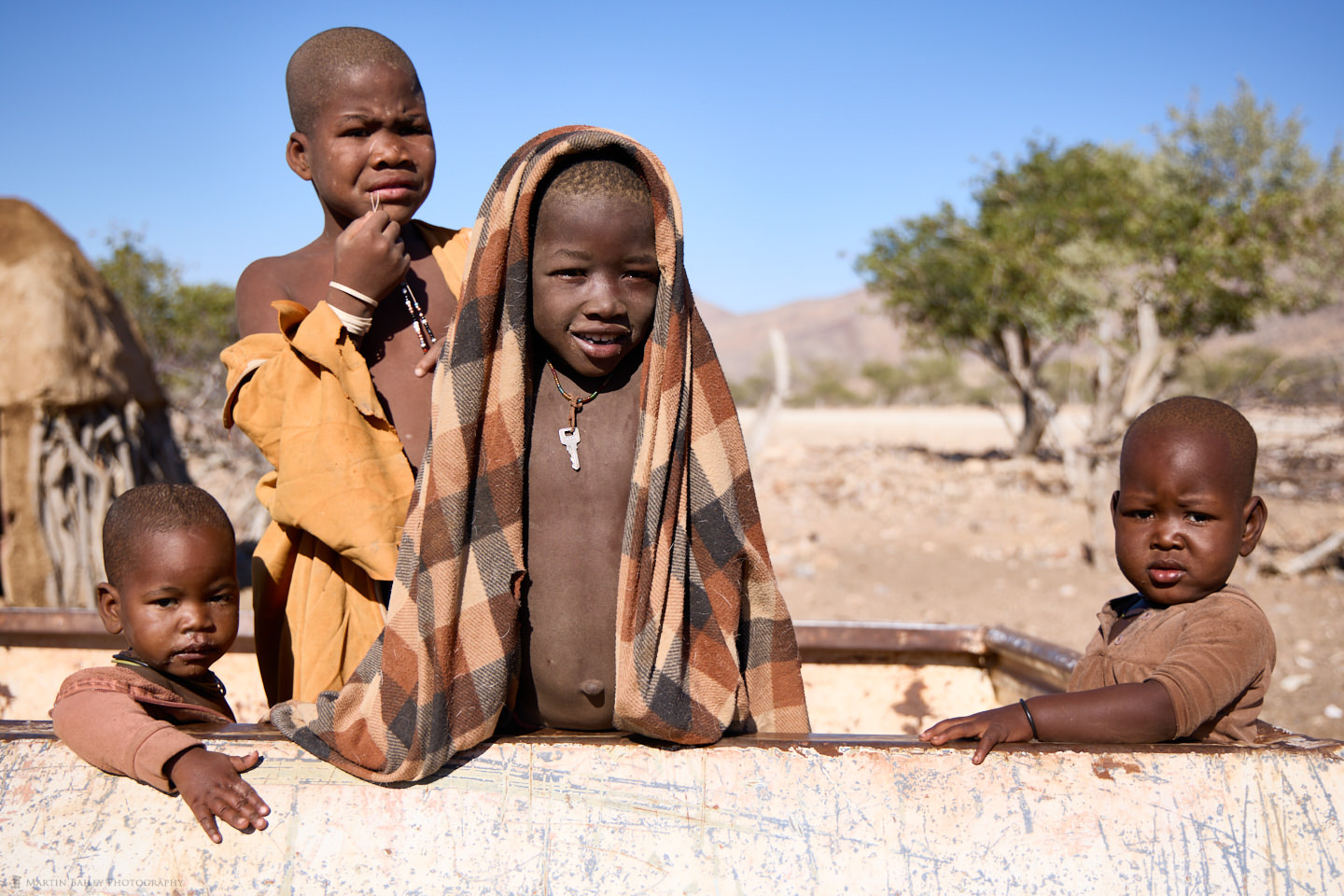
By the way, if you are new to the Podcast and wondering how to see the images, note that they are embedded in the audio file, and applications like Overcast or the Apple Podcasts app will automatically display the images for you as the audio progresses. There is a page under the Posts menu with the title Viewing Podcast Images that has more information. Note too that you can simply type mbp.ac with a slash then the episode number to jump to the post for each episode, so you can see the gallery for this post at https://mbp.ac/783. If you support us on Patreon for just $3/month or more you can also see the full manuscript, and supporters for $10 per month also get a beautifully laid out eBook of each post, that can be downloaded for reading offline and it contains 4K resolution images.
We took a number of the Himba people inside one of their huts to photograph them and at one time had a mother and child inside, giving me the opportunity to get this next photograph of the child lit by the beautiful light from the hut door. Note that I actually use a few layers to darken down the background to almost completely black and feather in the shadow manually with the brush in Capture One Pro. To illustrate this, I’m including the finished image alongside the original image straight out of the camera and included the Capture One Pro interface so that you can also see some of the settings.
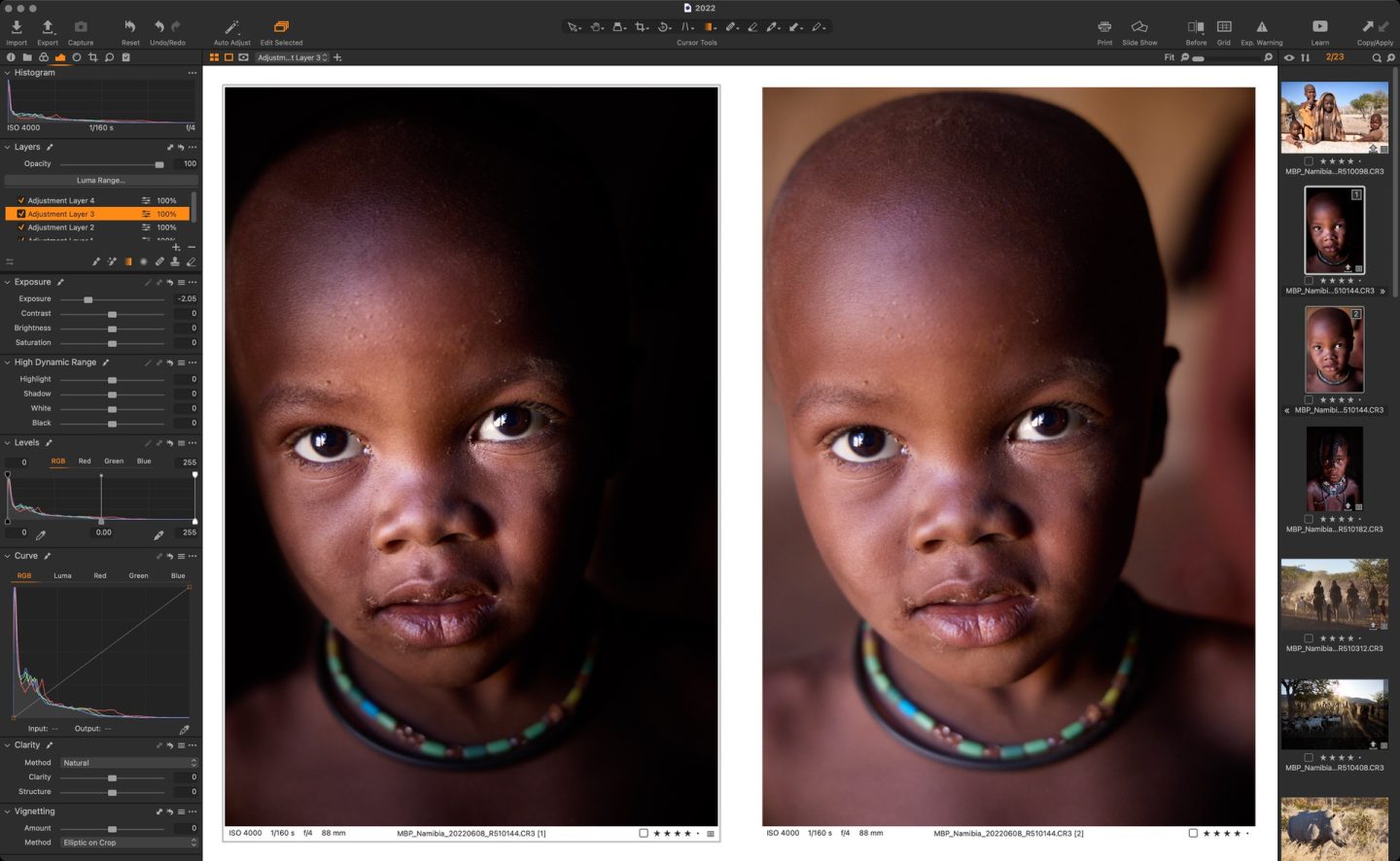
If you listened to the episode I did before leaving for Namibia, you might recall that I was planning to take my 50mm ƒ/1.2 lens along with me for these portraits, but I actually ended up leaving it at home, because my bag had simply started to get too heavy, and I was fine with shooting at ƒ/4 with my 24-105mm lens. It’s also nice to be able to zoom in and out as well, especially with kids, because they run around all over the place, making it difficult to frame them well with a prime lens. You can see that I shot this wide open at ƒ/4, with a focal length of 88mm and a 1/160 second shutter speed, at ISO 4000.
Next up, meet Tjiringa, a young Himba girl who I think may turn into my new project if we can’t get Makihoro back in the next few years. Tjiringa is very animated and can grimace as freely as she can smile, so it’s fun to photograph her, and I like the results. I zoomed all the way into 105mm for this, as she was sitting further away than the child in the previous shot. Although I do like a shot that I have of her from the doorway, I really like the serious, almost stern look on her face in this image, so it became my preferred image to share. So that you can see just the previous image as well, I’ll put both of these in together below.

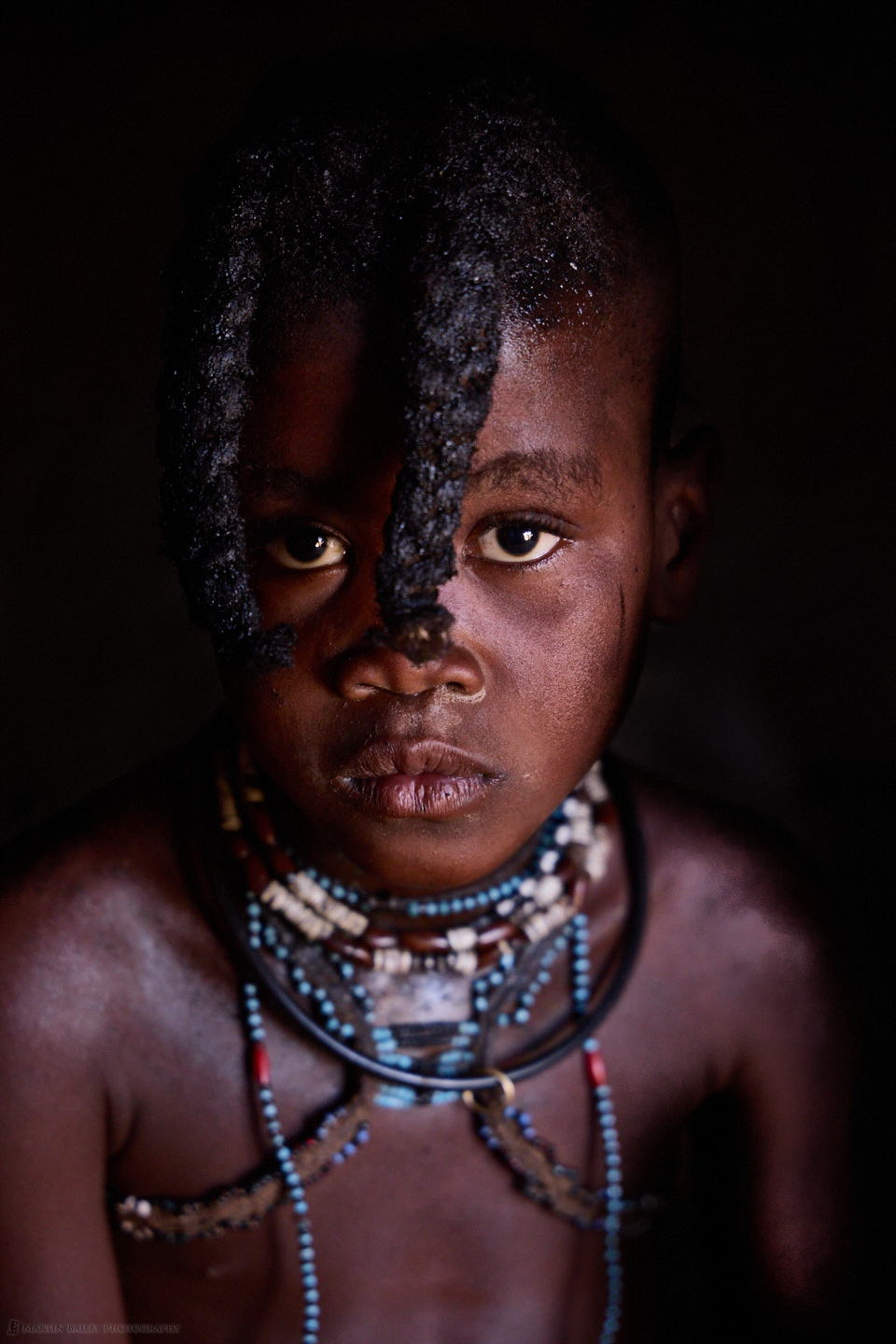
I did, of course, process the photo of this little girl the same as the photo of the small child, using multiple layers to gradually darken the background, and draw attention to the subject’s face. This also simply removes the background, which I often find somewhat distracting.
As I mentioned earlier, we came back to the Himba village later in the day, to photograph the Himba bringing their goats back into the inner corral, and here is a photograph of them doing just that. In fact, this was one of the times when they were taking the goats back out again, and would then drive them back in for me and my group to photograph them once more. I just found this view, with the four ladies in full traditional dress, to be so fascinating, that I couldn’t help grabbing a few extra frames.
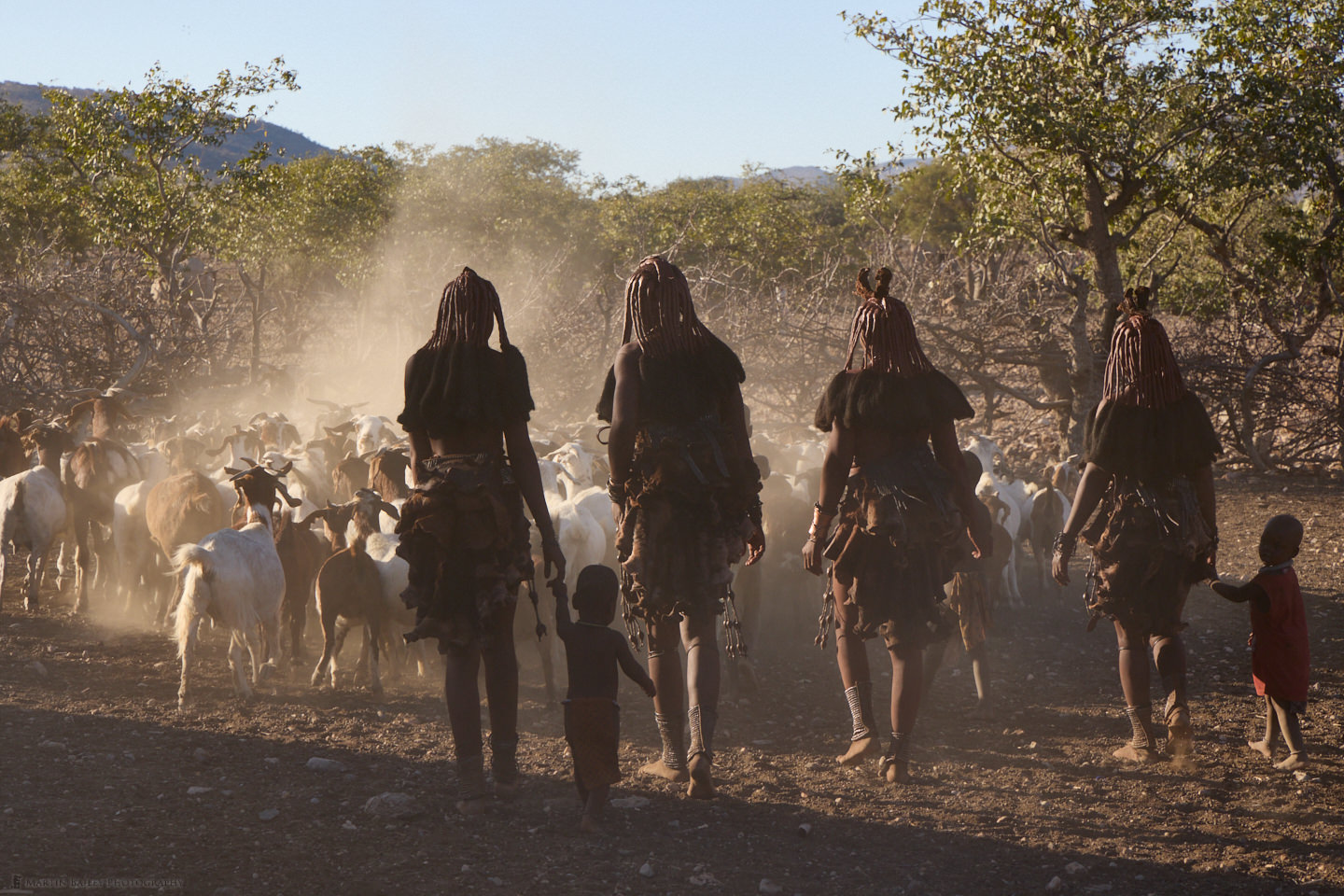
Following that, I got this next image which was probably my favorite of the session, with the sunlight catching the goat-dung dust through the wooden sticks that form the inner corral, and the ladies with their few children walking behind the herd again. There was a very relaxed mood, even when we had them do this a third time to increase our photographic opportunities, and one of the ladies thanked us for coming twice and spending so much time with them. I’m completely humbled by that, and as I have mentioned before, I’m so happy that we are able to have such valuable cultural experiences and exchanges on this tour.

The day after we visited the Himba people, we drove through the morning to arrive at our camp just outside the Etosha National Park, where we’d have lunch, and spend the next two nights. After lunch, we did one of their game drives, which I know to have a pretty good chance of seeing the subject of this next image, the amazing White Rhino. The last time I was here the owners of the lodge had bought a truckload of grass to feed the elephants and rhinos with because the drought had pretty much stripped the park bare. This meant that all of the rhinos were concentrated in a small area with the elephants, and that provided some unique opportunities, but it was so nice to see these magnificent animals simply reaching down for a mouthful of that beautiful golden grass.

We also had a few encounters with their lions, but the line of sight was very poor through the trees, so we only got a few shots as this male lion lifted his head reluctantly for a few seconds, before flopping back down to go back to sleep. The top left corner of this shot was very noisy, with heavily textured grass, catching the sunlight through the trees, and the right top corner was just grey dust, so the entire background was a source of annoyance. Because of that, I used a similar technique to that which I use to darken down the background of the Himba, but this was more difficult as the hair is really difficult to fade into the manufactured shadows. I think I made a relatively good job of it, but feel I’d like to revisit this again when I get more time.
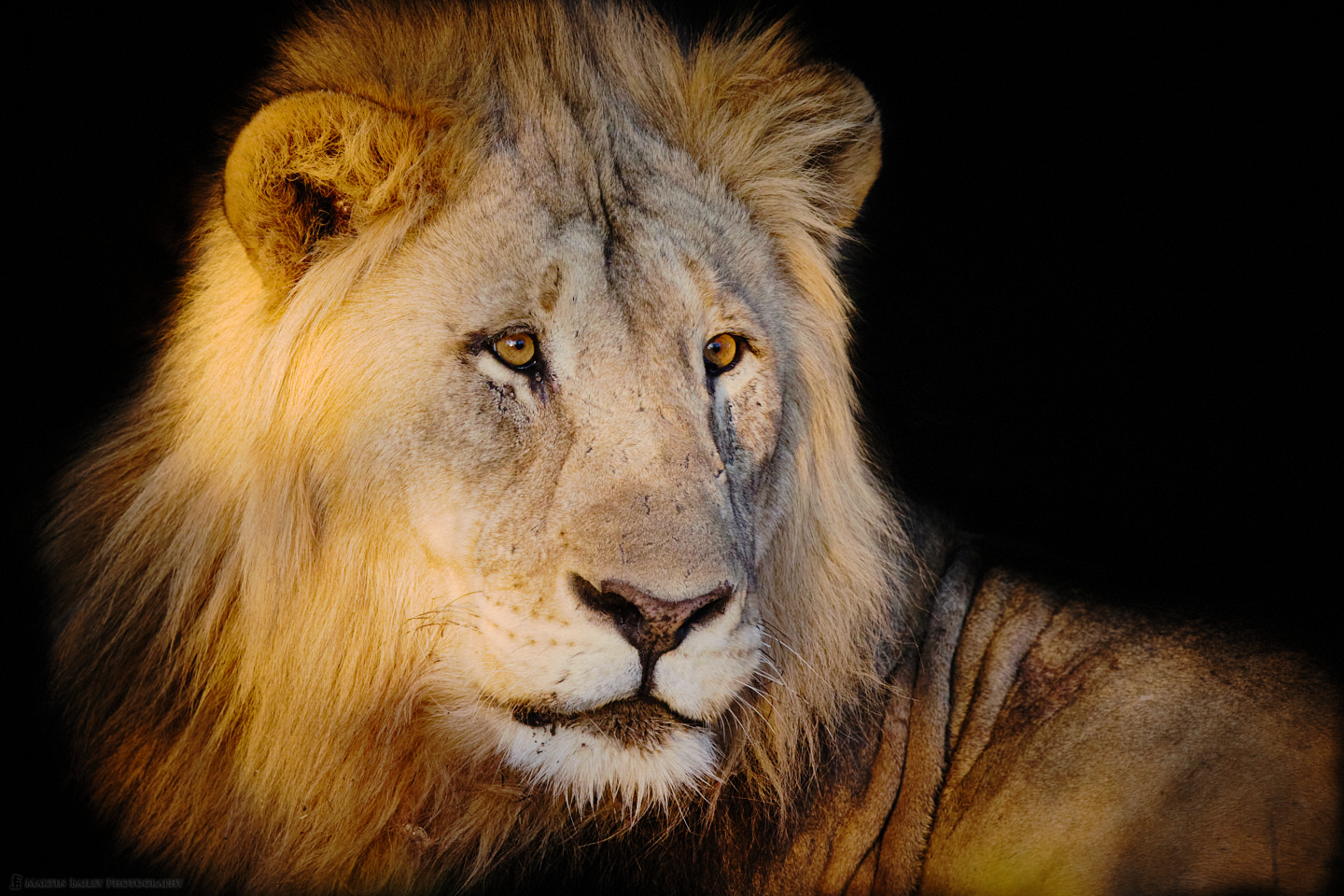
I was also very tempted to convert this to black and white, as I enjoy that aesthetic, but I couldn’t bring myself to throw out these beautiful golden colors from the last minutes of the day, and it also looked too much like the work of my friend Christian Meermann. I’m fine with work looking similar to others, especially that kind of processing, as I’ve been doing similar processing on flowers and other subjects for many years, but in my mind, Christian owns the high contrast black and white lion space, so I decided to stay away for now.
The following day was spent inside the Etosha National Park. Not exactly big game, we spent a few minutes photographing these ground squirrels, which I thought were hilarious with their bot-bellies and that huge belly button. I have some hand-held video of these guys as well that I will include a few seconds in the slideshow I’m going to make soon, so stay tuned for that.
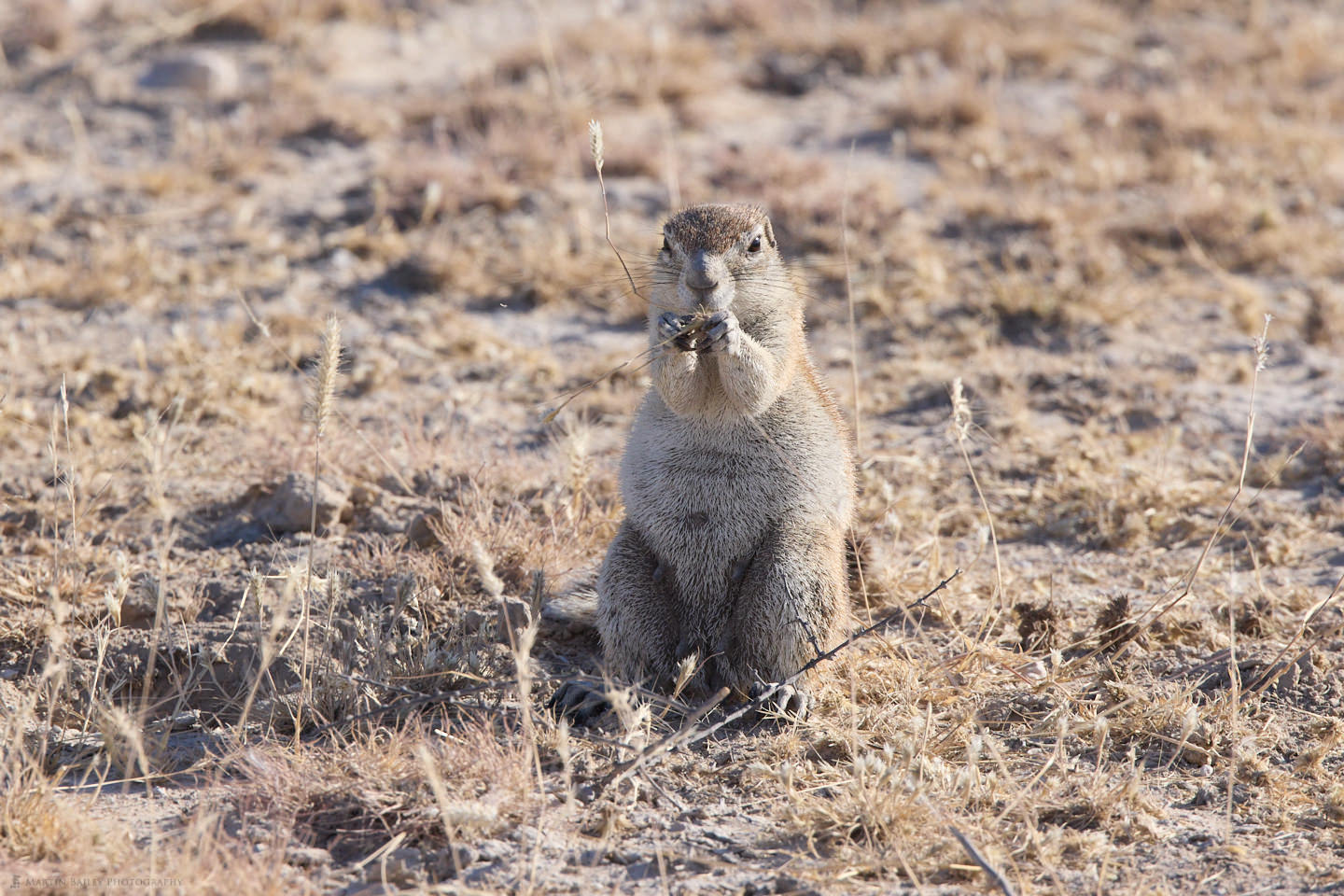
We also saw a black-backed jackal eating a snake, which I shot with my 1.4X Extender fitted to the 100-500mm lens, and still had to crop this to about half of the actual image size, but I’m pretty happy to have this. It’s a young jackal, so he did well to catch this snake. It took him a total of around 20 to 30 seconds to eat the snake, so I’d say he was happy for the meal.
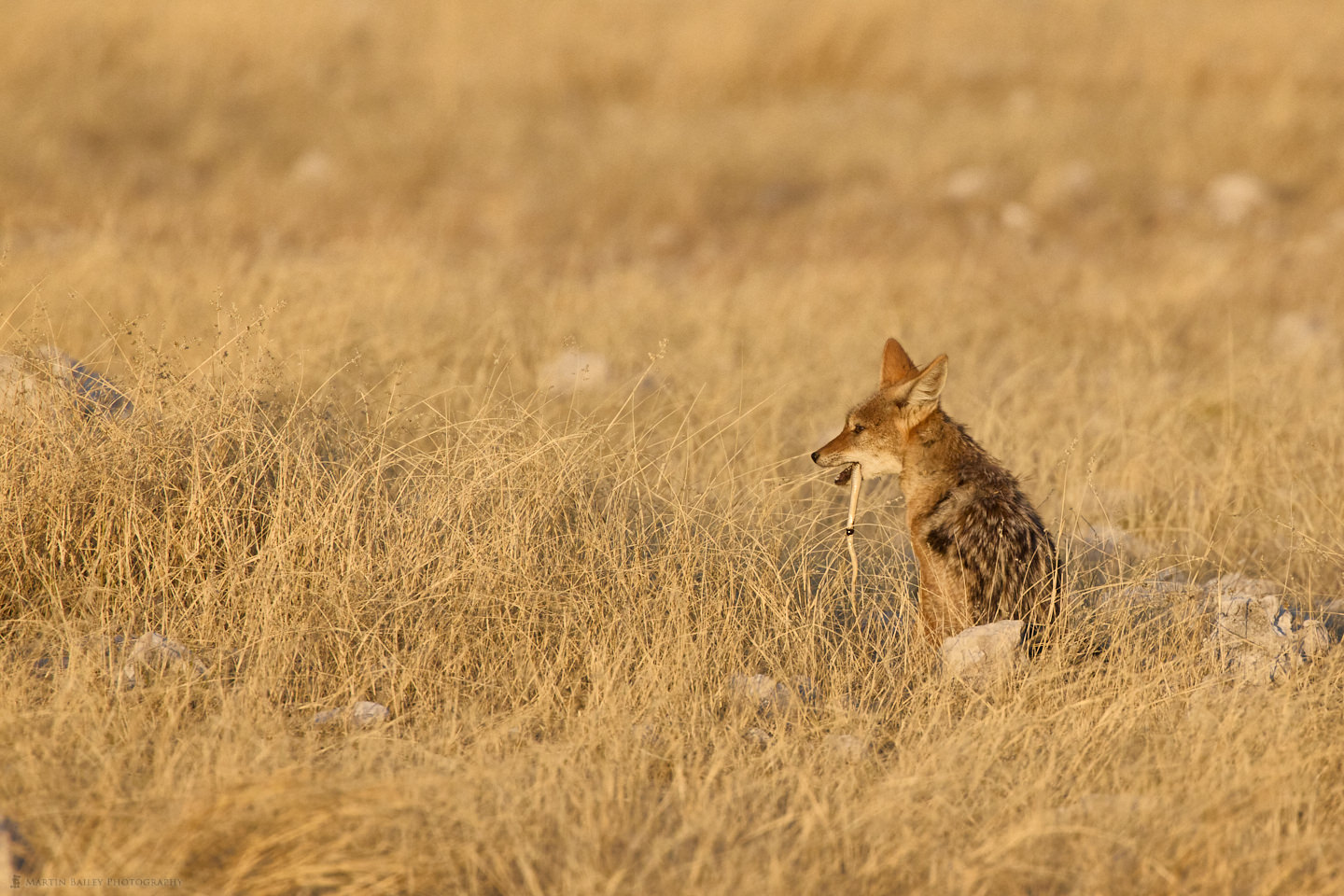
Ten minutes later, we found a black rhino on his way to the waterhole. I know this is common knowledge, but if you’ve never heard how to tell the difference between a black and white rhino, here goes. If you look at the photo of the white rhino that I shared earlier, you’ll see that it has a very wide mouth for grazing, and the word White actually simply came from someone mishearing the work Wide, for the wide-mouthed rhino. The black rhino although markedly smaller, is about the same color, but it has a pointed mouth, using for browsing as opposed to grazing. He was apparently given the name black rhino simply to differentiate it from the wrongly name white rhino. True story.
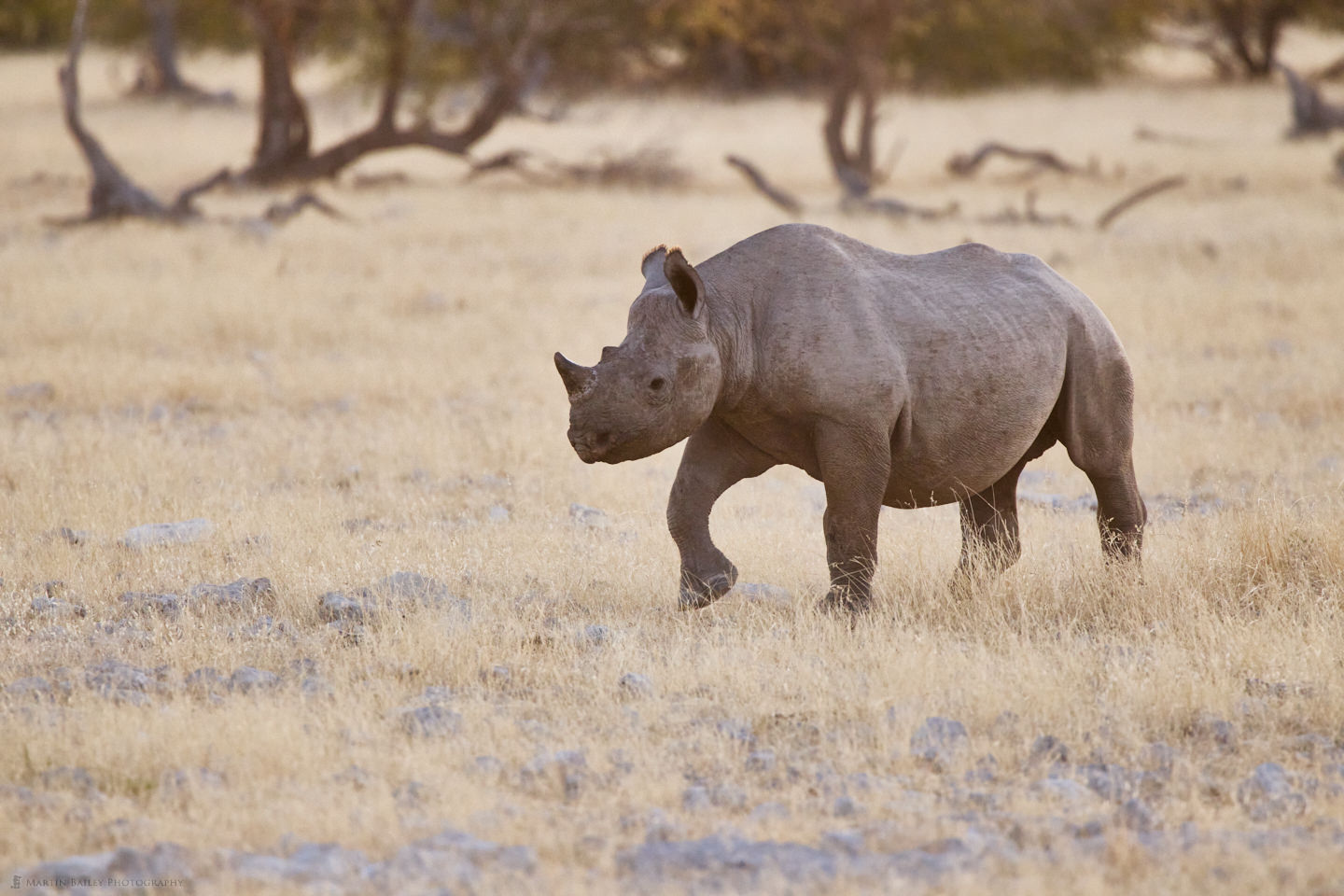
And, as the sun went down on our second day at the Etosha National Park, we reached our ten images, so we’ll wrap it up there for this episode. We will finalize this series next week, but our final ten images, from our last two days in Etosha.
Show Notes
Check out our tours page here: https://mbp.ac/tours
Subscribe in iTunes to get Podcasts delivered automatically to your computer.
Download this Podcast as an MP3 with Chapters.
Visit this page for help on how to view the images in MP3 files.


0 Comments